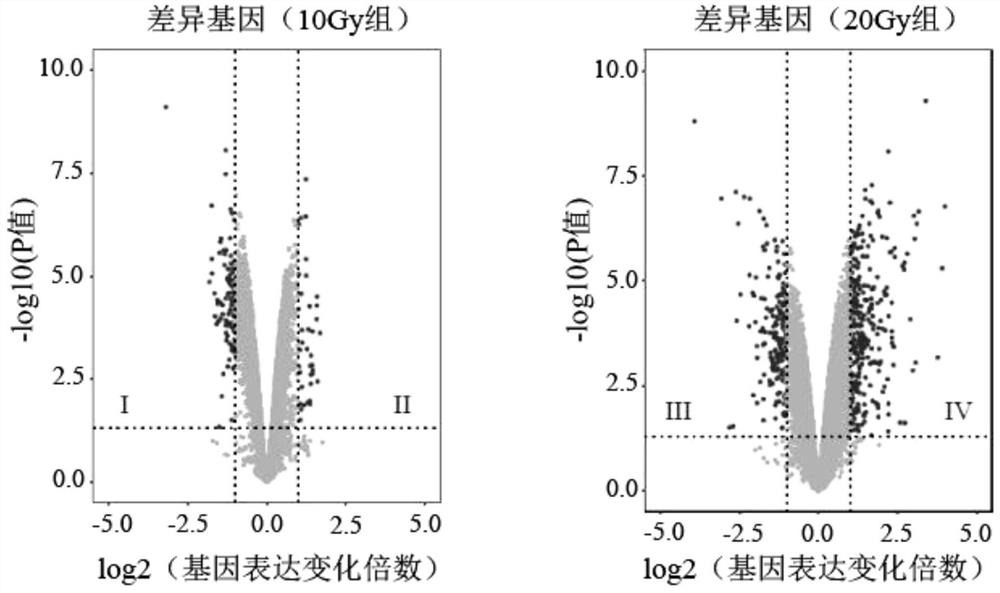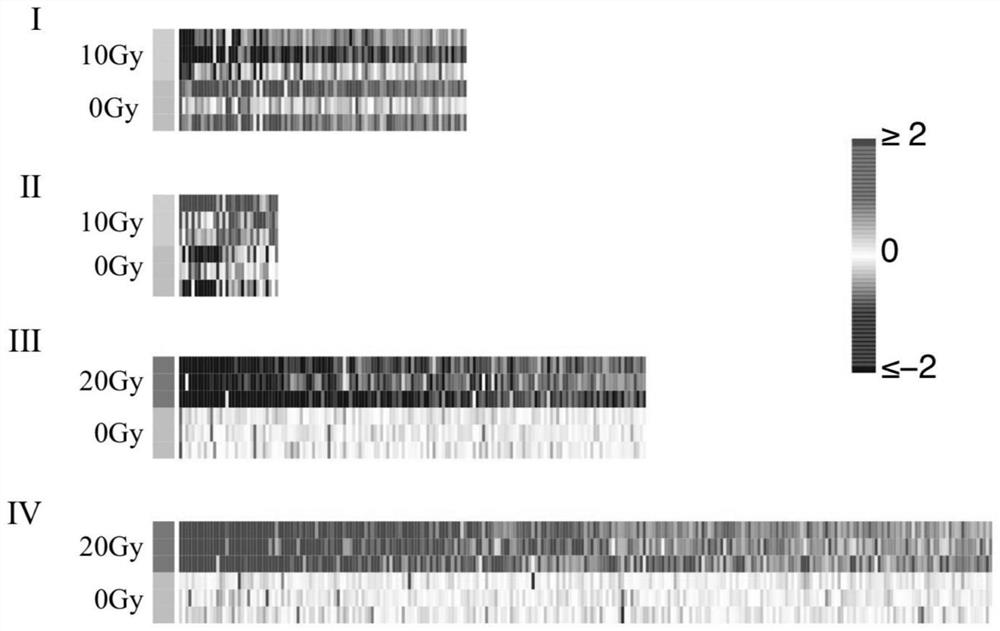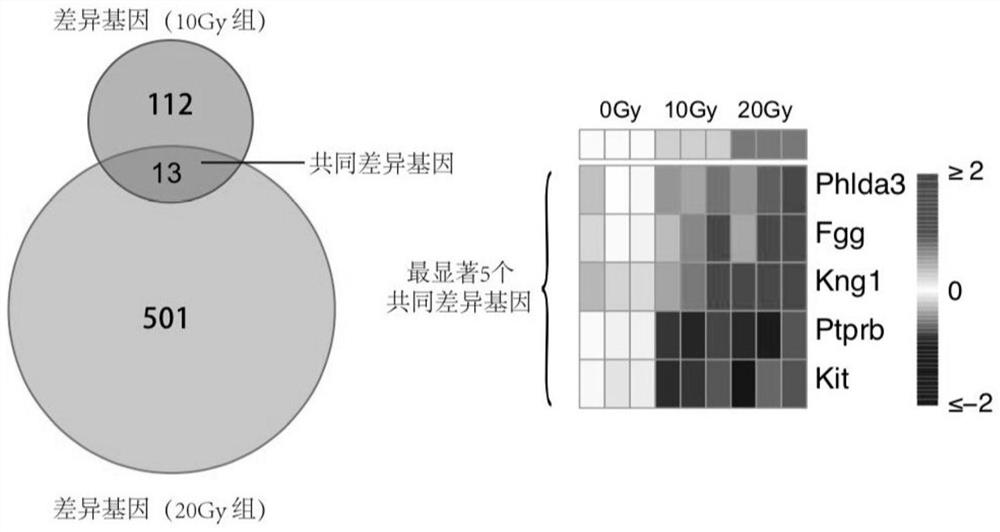Radiation Sensitive Gene Markers and Its Application in X-ray Radiation Dose Monitoring
A genetic marker, radiation-sensitive technology, applied in the determination/inspection of microorganisms, biochemical equipment and methods, DNA/RNA fragments, etc., to achieve the effect of convenient risk assessment
- Summary
- Abstract
- Description
- Claims
- Application Information
AI Technical Summary
Problems solved by technology
Method used
Image
Examples
Embodiment 1
[0050] Example 1 Screening and acquisition of radiosensitive gene markers
[0051] 1. Irradiation and grouping of animal experiments: C57BL6 female mice aged 8-10 weeks were used and raised at SPF level. The feeding conditions were: temperature (23±1)°C, relative humidity 55%±5%, pressure difference ≤10Pa, daily Light for 12h, free access to food and water.
[0052] 2. The mice were anesthetized with isoflurane induction and ketamine, fixed properly, and given 10Gy and 20Gy whole-lung field X-ray linear accelerator irradiation respectively, and the blank control group did not receive X-ray irradiation (0Gy). 12 mice were randomly assigned to each group of the control group and each dose of the experimental group. The mice were sacrificed by neck dislocation 24 weeks after irradiation, and fresh lung tissues were taken. The lung tissues were treated with TRIzol and stored at -20°C for future use.
[0053] 3. RNeasy Mini Kit (Qiagen) was used for lung RNA extraction: DNase I (...
Embodiment 2
[0070] This embodiment provides the application of the radiation-sensitive gene markers obtained in the above-mentioned embodiment 1 in X-ray radiation dose monitoring.
[0071] 1. In this embodiment, 8-week-old C57BL6 female mice were used, and a total of 48 mice were divided into three groups, 6 mice did not receive X-ray irradiation (blank group), and 6 mice received 5 times of 2Gy X-ray irradiation (10Gy group), 6 mice received 5 times of 3Gy X-ray irradiation (15Gy group), 6 mice received 5 times of 4Gy X-ray irradiation (20Gy group), 12 mice received 5 times of 6Gy X-ray Irradiation (30Gy group), 12 mice received 5 times of 8Gy X-ray irradiation (40Gy group).
[0072] The mice were anesthetized with isoflurane induction and ketamine, and fixed properly. The mice in the 10Gy group, 15Gy group, 20Gy group, 30Gy group, and 40Gy group were irradiated with lung X-rays according to the set dose, and the mice in the blank group were not irradiated after being fixed. radiation ...
PUM
 Login to View More
Login to View More Abstract
Description
Claims
Application Information
 Login to View More
Login to View More - R&D
- Intellectual Property
- Life Sciences
- Materials
- Tech Scout
- Unparalleled Data Quality
- Higher Quality Content
- 60% Fewer Hallucinations
Browse by: Latest US Patents, China's latest patents, Technical Efficacy Thesaurus, Application Domain, Technology Topic, Popular Technical Reports.
© 2025 PatSnap. All rights reserved.Legal|Privacy policy|Modern Slavery Act Transparency Statement|Sitemap|About US| Contact US: help@patsnap.com



